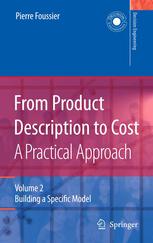

Most ebook files are in PDF format, so you can easily read them using various software such as Foxit Reader or directly on the Google Chrome browser.
Some ebook files are released by publishers in other formats such as .awz, .mobi, .epub, .fb2, etc. You may need to install specific software to read these formats on mobile/PC, such as Calibre.
Please read the tutorial at this link: https://ebookbell.com/faq
We offer FREE conversion to the popular formats you request; however, this may take some time. Therefore, right after payment, please email us, and we will try to provide the service as quickly as possible.
For some exceptional file formats or broken links (if any), please refrain from opening any disputes. Instead, email us first, and we will try to assist within a maximum of 6 hours.
EbookBell Team

4.0
26 reviewsParametric cost estimating, when properly used, is a very powerful and cost effective technique. Unfortunately, this technique is often misunderstood and rejected by many potential users for whom it could be a beneficial tool. The development of an agreement on how to use it and how to recognise its limitations is a major benefit to the cost estimating community.
From Product Description to Cost: A Practical Approach:
• presents different ways of parametrically forecasting costs, and the advantages and disadvantages of these methods by using real examples from the mechanical, software and building industries;
• discusses most of the mathematical procedures which are useful for parametrically forecasting costs; and,
• introduces the judgement needed to audit the ways in which these forecasting techniques are used, firstly as a process, and secondly as a tool to generate estimates.
Volume 2: Building a Specific Model is divided into nine parts and focuses on the building of ‘specific’ cost estimating models. These models explicitly refer to a ‘product family’, and, as opposed to ‘general’ models, any company (if properly organised) can build these models. Understanding the procedures is key in creating successful specific models; for this reason all these procedures are fully described in this volume. Classical methods and new ones (such as the "bootstrap") are described and illustrated.
The Decision Engineering series focuses on the foundations and applications of tools and techniques related to decision engineering, and identifies their relevance in ‘engineering’ decisions. The series provides an aid to practising professionals and applied researchers in the development of tools for informed operational and business decision making, within industry, by utilising distributed organisational knowledge.